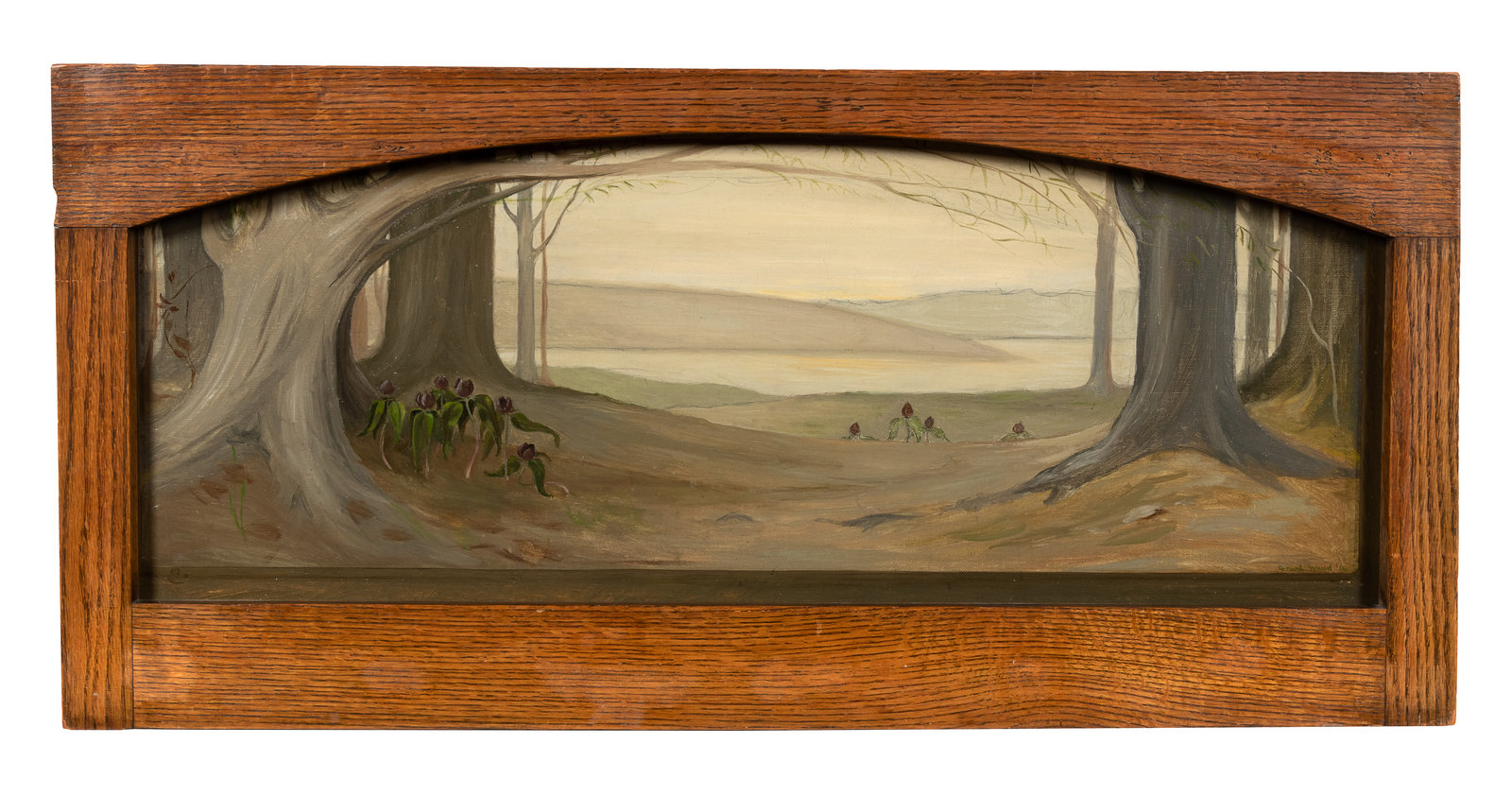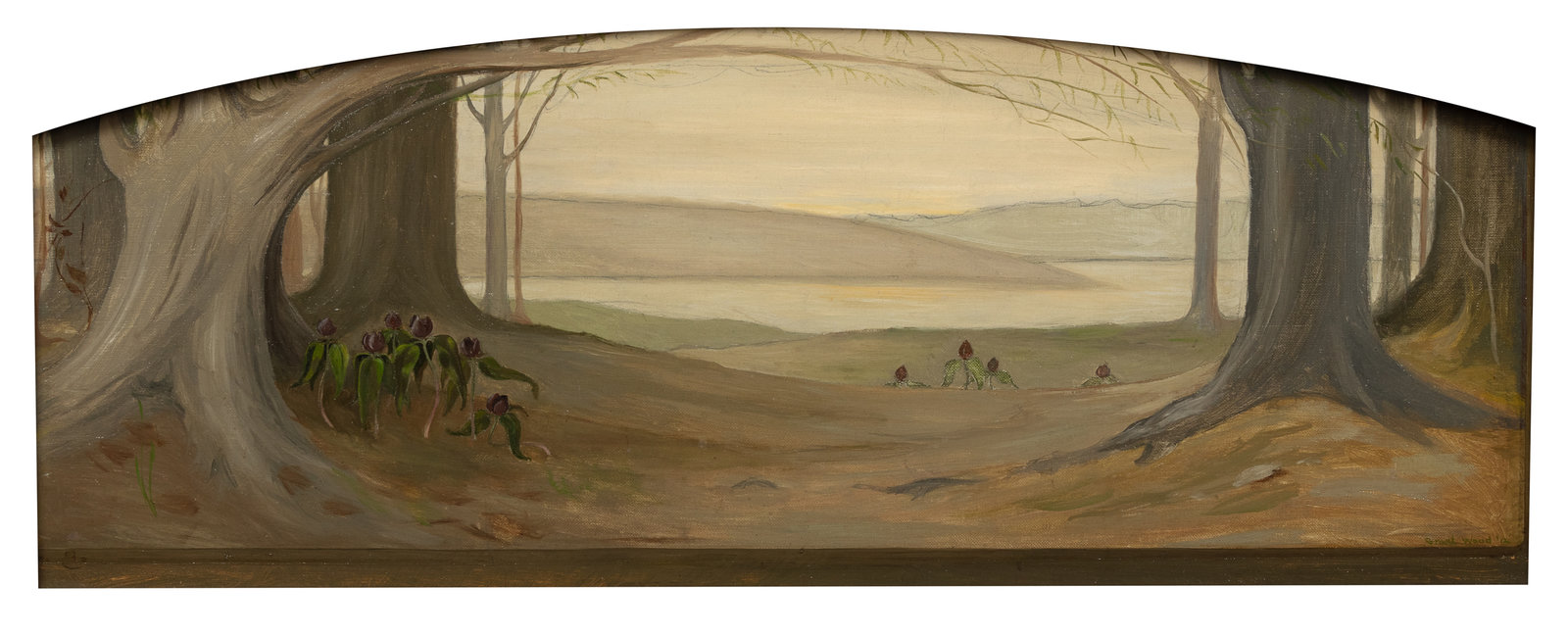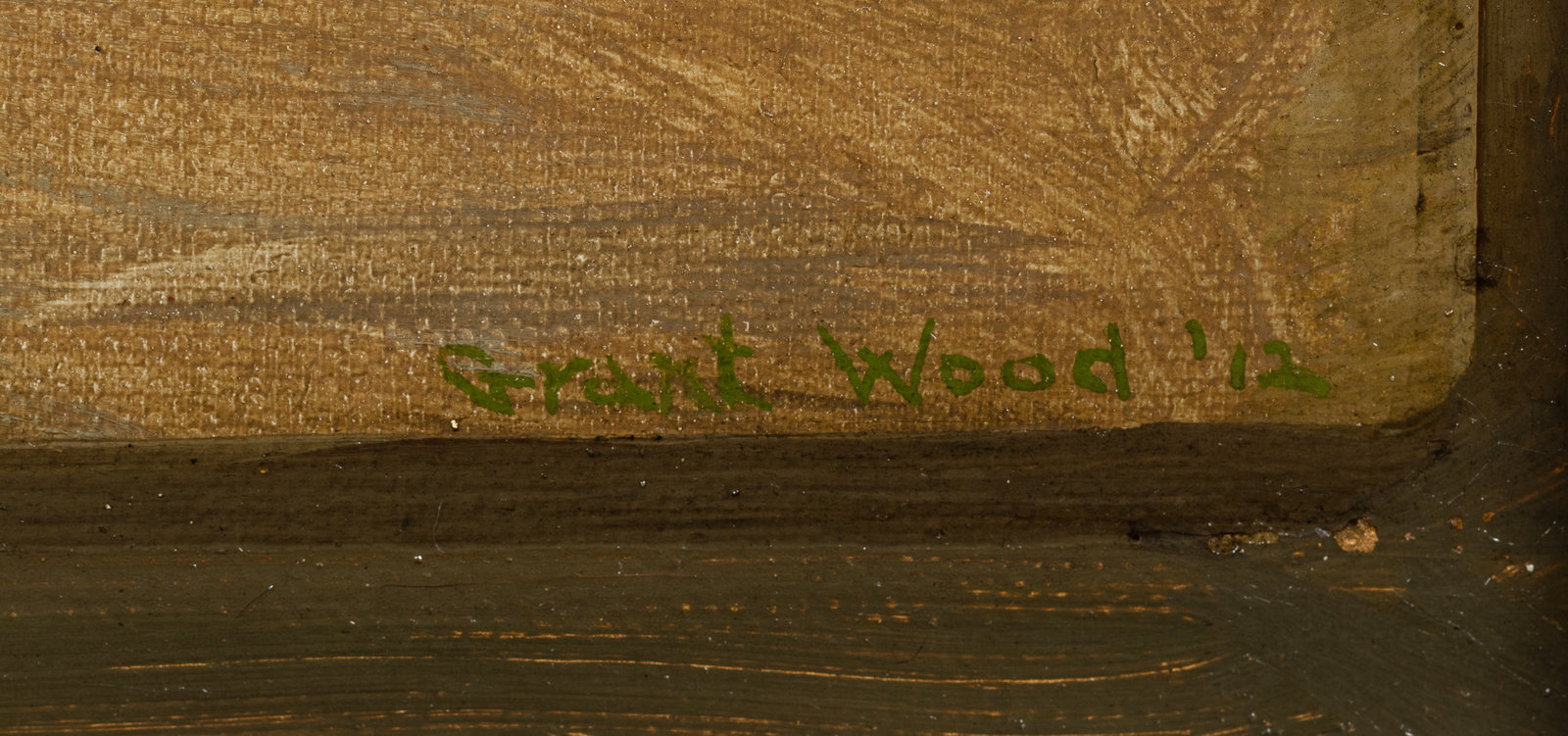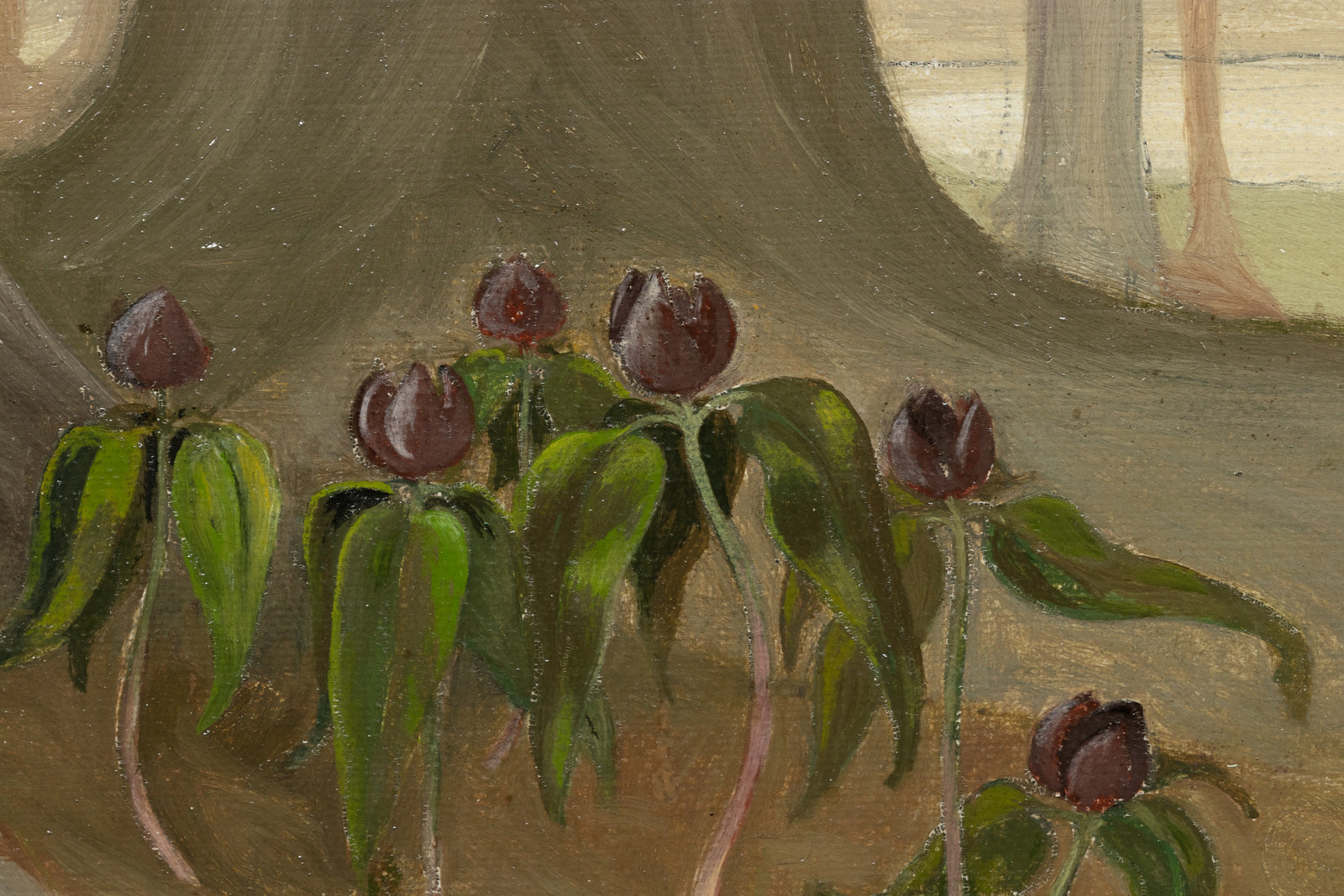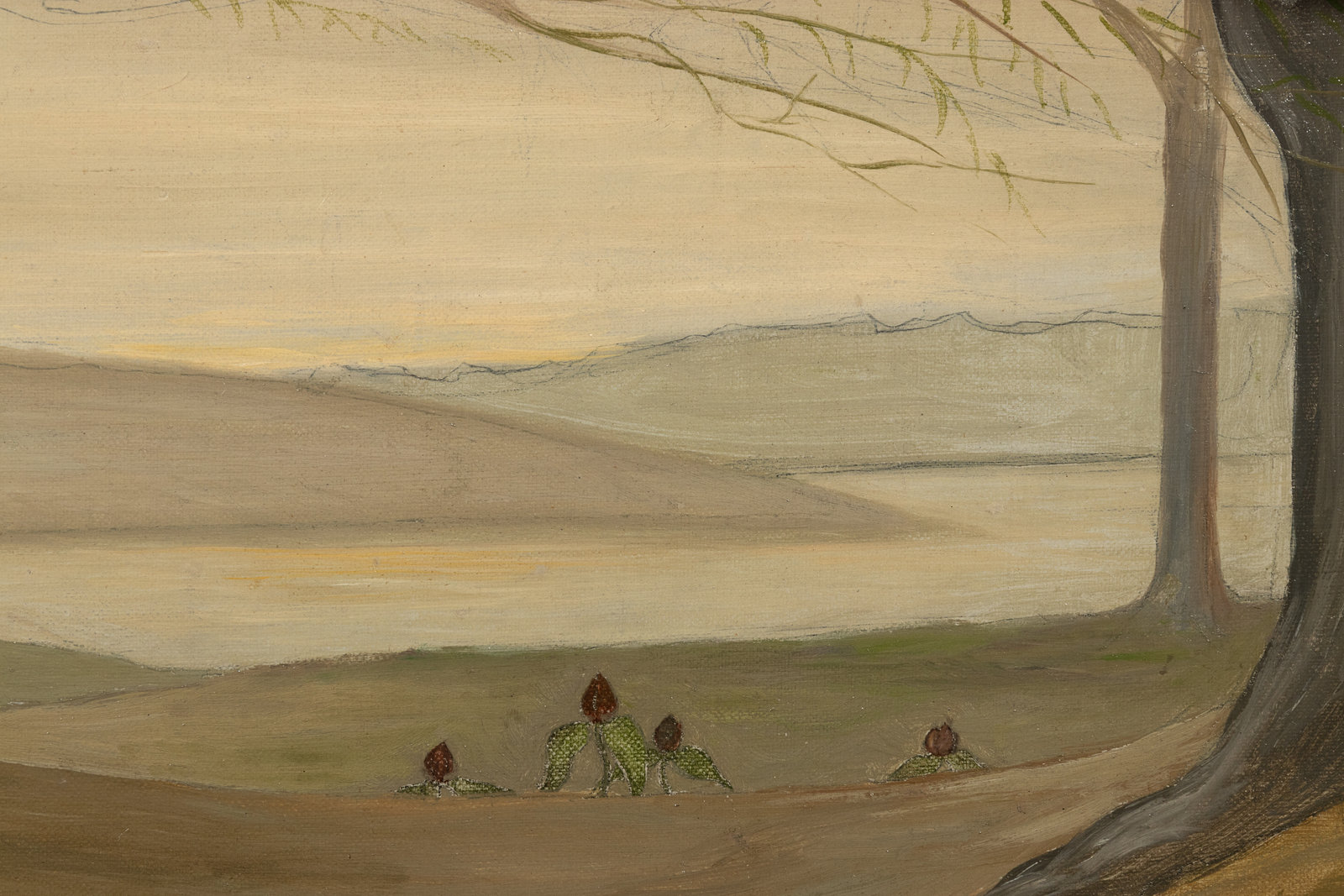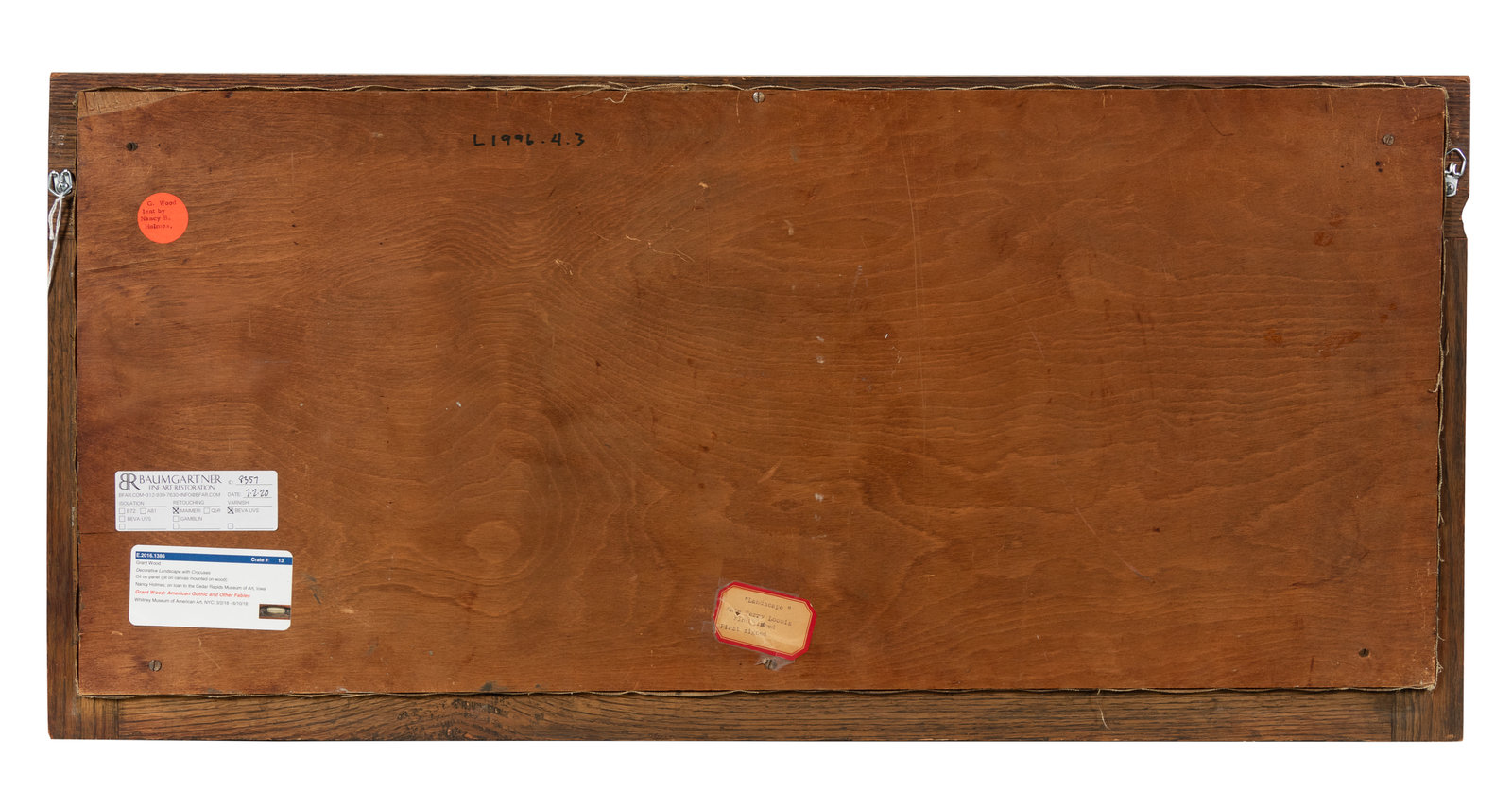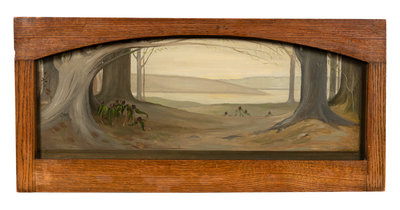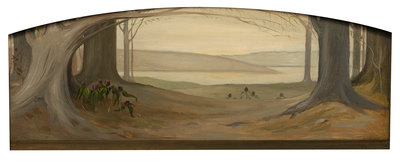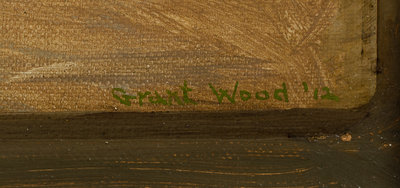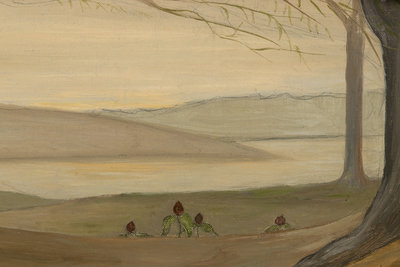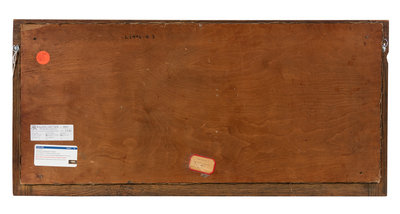Grant Wood
(American, 1891-1942)
Decorative Landscape with Crocuses
, 1912
Sale 788 - American and European Art
Sep 30, 2020
10:00AM CT
Live / Chicago
Estimate
$30,000 -
$50,000
Sold for $45,000
Sold prices are inclusive of Buyer’s Premium
Lot Description
Grant Wood
(American, 1891-1942)
Decorative Landscape with Crocuses
, 1912oil on canvas laid to board
signed Grant Wood and dated (lower right)
15 x 34 inches.
Property from the estate of Nancy Holmes, Cedar Rapids, Iowa
This painting will be included in Joseph S. Czestochowski's forthcoming catalogue raisonné of the artist's work by International Arts® at www.catrais.org.
Provenance:
Charles Calvin Loomis and Kate L. Terry Loomis, Cedar Rapids, Iowa
G. Stewart Holmes, Cedar Rapids, Iowa
James T. Holmes, son of the above, Cedar Rapids, Iowa
Exhibited:
Cedar Rapids, Iowa, Cedar Rapids Art Association, Public Art Gallery, An Exhibition of Paintings and Sculpture by Mrs. Charles Dieman, Marvin D. Cone, and Grant Wood, April 14-28, 1920, no. 32, An Overmantel Decoration (Possibly)
New York, Whitney Museum of American Art, Grant Wood: American Gothic and Other Fables, March 2-June 10, 2018, pp. 94-95, 203, pl. 8, illus.
Literature:
Hazel E. Brown, Grant Wood and Marvin Cone: Artists of an Era, Ames, Iowa, 1972, p. 10
James M. Dennis, Grant Wood: A study in American art and culture, New York, 1975, pp. 21, 23, fig. 6.
Lot essay:
Painted in 1912 by a young Grant Wood, Decorative Landscape with Crocuses was created as a fireplace overmantel for the home of Charles and Kate Loomis of Cedar Rapids, Iowa. Charles Loomis and his brother ran a major construction company in the community. Wood embraced this tradition, creating works such as Fanciful Depiction of the Roundhouse (1920), Phantasy of Spring (1921), and Overmantel Decoration (1930). These artworks were similar to his panoramic stage backdrops for community theater performances, which he produced well into the early 1930s.
Literature:
Hazel E. Brown, Grant Wood and Marvin Cone: Artists of an Era, Ames, Iowa, 1972, p. 10
James M. Dennis, Grant Wood: A study in American art and culture, New York, 1975, pp. 21, 23, fig. 6.
Lot essay:
Painted in 1912 by a young Grant Wood, Decorative Landscape with Crocuses was created as a fireplace overmantel for the home of Charles and Kate Loomis of Cedar Rapids, Iowa. Charles Loomis and his brother ran a major construction company in the community. Wood embraced this tradition, creating works such as Fanciful Depiction of the Roundhouse (1920), Phantasy of Spring (1921), and Overmantel Decoration (1930). These artworks were similar to his panoramic stage backdrops for community theater performances, which he produced well into the early 1930s.
In 1909, between his junior and senior high school years, Wood traveled to Minneapolis to enroll in summer classes offered by The Handicraft Guild of Minneapolis, Minnesota. Director and Instructor Ernest A. Batchelder taught the School of Design and Crafts' Summer Session. It was during this time that Wood further immersed himself in the ideals of the American Arts & Crafts Movement, as a disciple under Batchelder. Batchelder was an important advocate of the English Arts and Crafts style and taught on the principles of decoration rather than imitation, tenets Wood readily absorbed.
Wood later co-founded the Loomwood Craft Shop with Kate Loomis in Cedar Rapids, Iowa in 1911 and the shop stayed in operation into 1913. Likely as part of his work at the shop, Wood executed the present artwork. In Grant Wood and Marvin Cone: Artists of an Era, the author Hazel E. Brown states that Wood helped Kate Loomis, a Cedar Rapids resident, “...decorate her home, and over her mantel in an oak frame he placed his first signed painting—jack-in-the-pulpits in tree roots.” (H. Brown, Grant Wood and Marvin Cone: Artists of an Era, Ames, Iowa, The University of Iowa Press, 1972, p. 10) Despite the confusion of flower names, a label on the verso of the present artwork further attests to this being one of Wood’s first signed paintings.
In fact, the flowers depicted are likely neither crocuses nor jack-in-the-pulpits, but instead may be prairie trilliums. Native to the midwestern states, prairie trilliums are shade-loving flowers that emerge in the spring, usually in woodlands. Wood was familiar with the flora and fauna of his native landscape and had ample opportunity to observe the flowers, which are characterized by each having three maroon petals and three green leaves perched atop a thick stem.
The young artist shows the flowers in the bare forest earth, protected by an arching stretch of leafless branches that extend from trees to the left and right of the composition. Beyond the trees and flowers, a vista opens of patterned, curved hills. The curve of the painted branches and hills is echoed by the physical curve of the oak frame’s upper molding. The repetition of form, use of pattern, and simple composition attest to Batchelder’s teachings, which Wood had so recently learned. The artist would maintain these principles throughout his career, and the present painting is an early precursor to his later iconic work.
Condition Report
The physical condition of lots in our auctions can vary due to
age, normal wear and tear, previous damage, and
restoration/repair. All lots are sold "AS IS," in the condition
they are in at the time of the auction, and we and the seller make
no representation or warranty and assume no liability of any kind
as to a lot's condition. Any reference to condition in a catalogue
description or a condition report shall not amount to a full
accounting of condition. Condition reports prepared by Hindman
staff are provided as a convenience and may be requested from the
Department prior to bidding.
The absence of a posted condition report on the Hindman website or
in our catalogues should not be interpreted as commentary on an
item's condition. Prospective buyers are responsible for
inspecting a lot or sending their agent or conservator to inspect
the lot on their behalf, and for ensuring that they have
requested, received and understood any condition report provided
by Hindman.
Please email conditionreports@hindmanauctions.com for any additional information or questions you may have regarding this lot.
